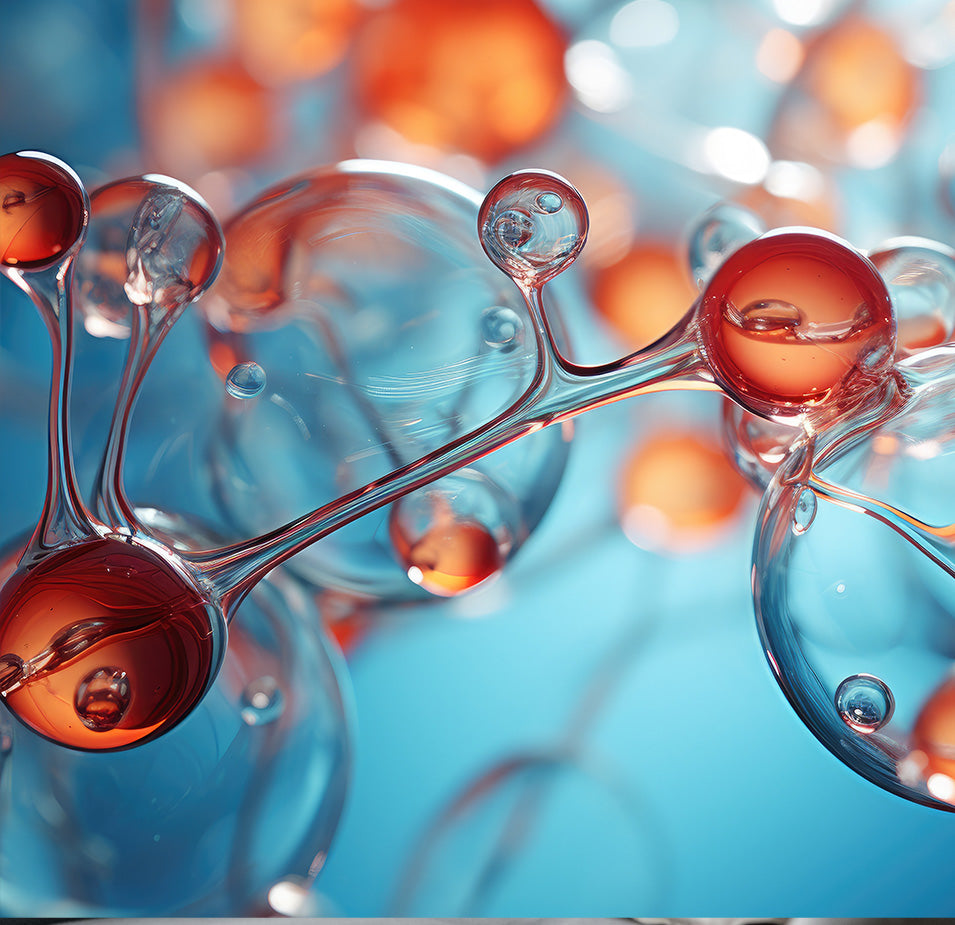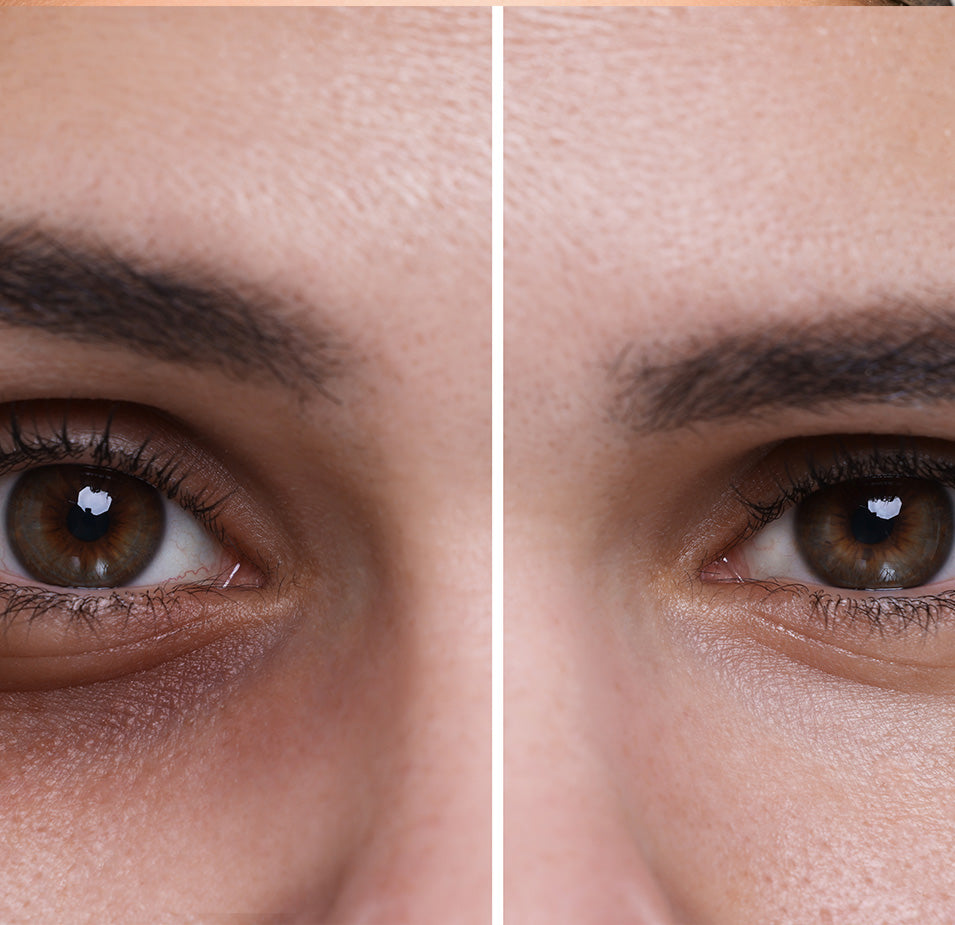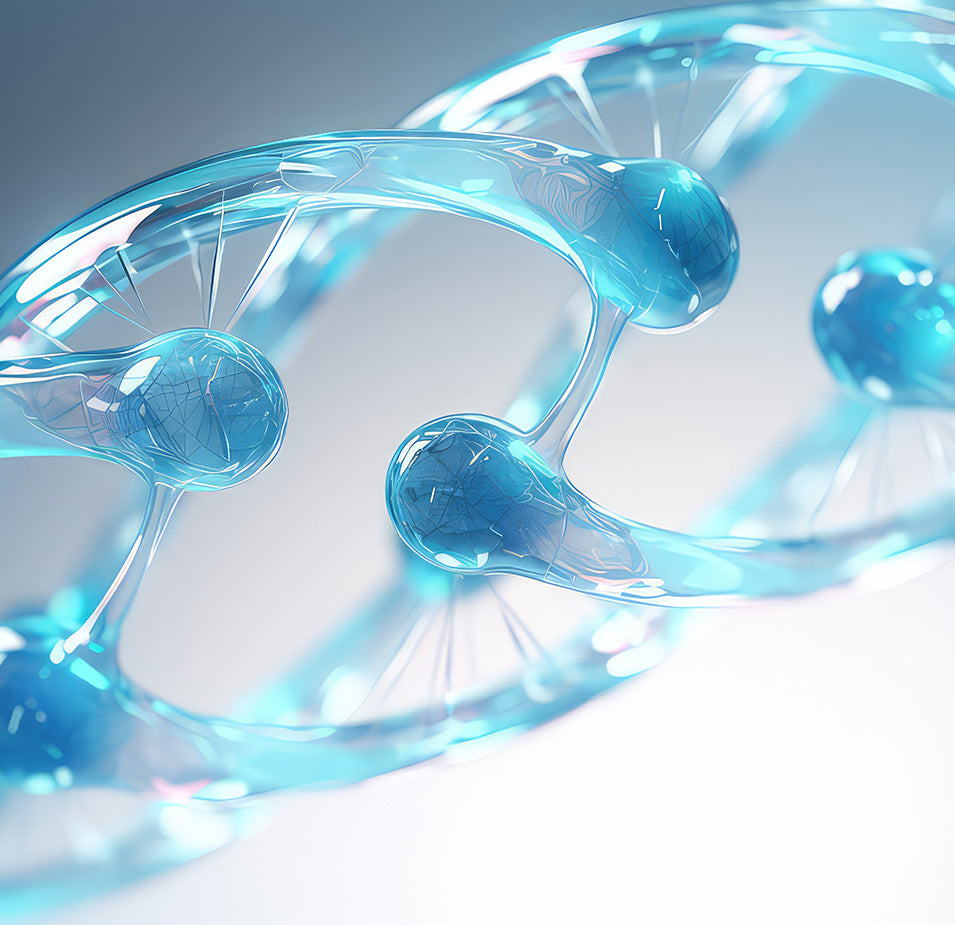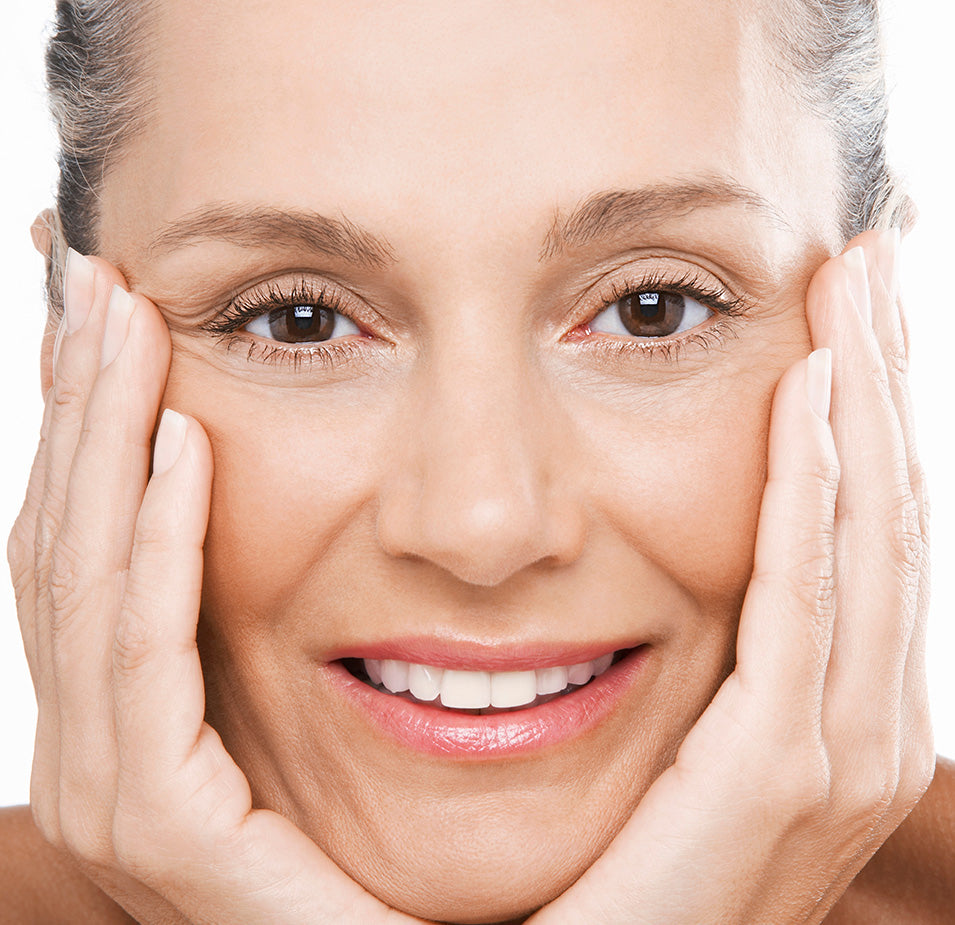
We’ve all heard the old saying that “you are what you eat.”
There is perhaps no greater influence on our health and wellness than our diet. What we eat is one of the most significant factors in how our body functions and feels. Diet impacts all kinds of crucial health indicators, like sleep and mental health.
It should be no surprise, then, that our diet also has a huge impact on our skin and how we age. So what are the best beauty-boosting foods that give you clear, glowing, healthy skin?
While some general rules of nutrition are universal, everyone has different nutrient needs. What you may not know is that ethnicity plays a big role in proper nutrition. Read on to learn how ethnicity can help you choose the right foods for optimal skin health.
How Does Diet Impact Skin Health?

Your food quite literally feeds your skin. Dietary nutrients drive the processes of reviving skin cells, flushing toxins, repairing damage, and restoring hydration. Eating well just might be the best anti-aging skincare secret there is.
Specific nutrients serve targeted functions in your body, including for your skin. For example:
- Carotenoids, a nutrient found in green, yellow, and red vegetables, helps regenerate your skin cells. They can also help reduce the risk of hyperpigmentation by decreasing melanin production. Foods like yams, vegetable soup, and kale salad are rich in carotenoids.
- Vitamin C supports the rebuilding and remodeling of collagen. It’s also a powerful antioxidant that fights cell damage, slowing down the aging process. Foods rich in vitamin C include citrus, broccoli, and other fruits and veggies. You can get your vitamin C dose from tons of delicious recipes.
The basics of nutrition are simple: choose whole foods over processed products, consume adequate calories, and balance carbs, protein, and healthy fats.
But beyond the basics, it gets more complicated. There is a whole world of subtle differences in micronutrient needs. These small distinctions can have big impacts on your body, including physical aging.
Decoding the ties between ethnicity and nutrition is a must for a healthy skin diet. By filling nutrient gaps, you can improve your skin's elasticity and longevity.
Ethnicity and Nutrient Needs
Over generations, cultural, environmental, and evolutionary factors have influenced diet and dietary needs. People throughout the world adapt to ways of eating based on local availability of foods, body composition, and other factors.

Staple Foods
Many fruits, grains, and vegetables need certain climate conditions for growth. Some crops are native to particular areas and become integral parts of local cuisine. For example, fruits like pitaya, rambutan, and mangosteen are native to Asia and are not grown as abundantly in other parts of the world. Similarly, sorghum and millet are native cereals in many African countries and are not consumed as commonly elsewhere.
When a high concentration of a certain crop is available in a given region, the local population is likely to rely more heavily on that food. For instance:
- The typical Afro-Caribbean diet relies on animal proteins, which are higher in saturated fat.
- Eastern and South Asian cuisines include an abundance of spices and herbs.
- Japanese fare is based on seafood, soy, and fruits/veggies.
Fiber Intake
The rise of processed foods has led to a decline in daily fiber intake across age groups and ethnicities. Dietary fiber is a key regulator of metabolism, bowel movements, and toxins. These processes are key for skin clarity and health.
Fiber intake is found to be lowest among Caucasians and people of African descent. This can contribute to accelerated skin aging.
Body Composition
Not all nutritional disparities can be explained on the basis of geographical diversity and food choices. The structure and makeup of your body, such as the thickness of your skin, also play a role.
For example, vitamin D levels are higher among fair-skinned people. This is because people with darker skin have higher melanin content and thicker skin. Melanin and thick skin offer sun protection, but may slow down the synthesis of vitamin D as a result.
Other nutrient differences identified among ethnic groups include:
- Lower concentrations of selenium, vitamin E, and vitamin C among those of African descent compared to Caucasians.
- Higher levels of alpha-carotene in Latin people compared to white people.
- Selenium deficiency across some parts of Asia due to low selenium content in soil.
To compensate for nutrient deficiencies, you may want to experiment with supplements or new foods. Balancing micronutrients supports skin elasticity and clarity, along with other health benefits.
Gut Bacteria
The human body is made up of more than 30 trillion cells. As wildly high as that number may sound, you have even more bacterial cells in your body than human cells—around 38 trillion.
Your body relies on healthy bacteria in the gut for a vast range of beneficial functions. But the wrong kind of gut bacteria can increase the risk of health issues like colon cancer, inflammatory bowel disease, and obesity.
A 2018 study found that the type of bacteria in your gut is related to your ethnicity. This affects health and wellness in a variety of ways.
For example, a certain anti-inflammatory bacteria is less common among Asians. This helps explain why people of Asian heritage may be more vulnerable to issues with inflammation.
Your environment, lifestyle, diet, exposure to toxins, and other variables influence gut bacteria. That’s why different ethnic groups develop different bacterial makeups.
Gut bacteria affects your metabolism and the bioavailability of nutrients in your body. These factors have a great influence on the development of physical signs of aging.
How are Body Mass Index, Ethnicity, and Skin Related?

Diet, genetic factors, lifestyle, and environment can speed up or slow down metabolism. Your metabolism rate affects your risk of obesity and, in turn, your skin health.
New research has established that obesity can have a strong impact on how our skin ages. Although obesity doesn't change your skin's features, it can affect your blood circulation and wound healing. Obesity can also increase inflammation, which speeds up the onset of wrinkles and fine lines.
The prevalence of obesity is highest among Caucasians and lowest among Asians. This helps explain why white people are more prone to accelerated skin aging, whereas Black and Asian people tend to look younger for longer.
What to Eat for Better Skin
No matter your identity, there’s a good chance that improving your diet can slow down physical aging, plump and strengthen your skin barrier, and give you skin that feels as healthy as it looks.
When making diet adjustments, it’s important to consider your ethnic background. Your ethnicity matters when it comes to skin type, metabolism, and nutrient needs.
With that said, some tips can be helpful for most people regardless of ethnicity. So what’s the best anti-aging diet? Here’s what experts recommend:
- Eat lots of antioxidant-rich foods, like berries and colorful vegetables. This helps your skin fight the activation of cell-damaging free radicals. Antioxidants like copper, selenium, and zinc can stave off aging by delaying the onset of wrinkles and fine lines.
- Watch your intake of omega-3 polyunsaturated fats and monosaturated fats, which, in excess, can speed up skin aging.
- Limit your consumption of refined sugar. Too much sugar can interfere with collagen production, leading to premature aging. Sugar is also one of the main culprits of weight gain, which can negatively impact skin health.
Learning about your unique nutrition needs can transform your skin. While it may take some time, effort, and experimentation, the payoffs of eating a healthy, balanced diet are well worth it for your beauty and wellbeing—both inside and out.
References
- Brooks, Andrew W., Sambhawa Priya, Ran Blekhman, and Seth R. Bordenstein. Gut microbiota diversity across ethnicities in the United States. PLoS biology 16, no. 12 (2018): e2006842.
- Huerta-Franco, Maria-Raquel, Julie W. Banderas, and Jenifer E. Allsworth. Ethnic/racial differences in gastrointestinal symptoms and diagnosis associated with the risk of Helicobacter pylori infection in the US. Clinical and experimental gastroenterology, 11 (2018): 39.
- Dindyal, S., & Dindyal, S. (2003). How personal factors, including culture and ethnicity, affect the choices and selection of food we make. Internet Journal of Third World Medicine, 1(2), 27-33.
- Mohsen, N., Atieh, M., & Farkhondeh, R. (2015). A review on nutrition and skin aging. Iranian Journal of Dermatology, 18(1), 20-24.
- Dreher, M. L. (2018). Overview of the health benefits of adequate fiber intake. In Dietary fiber in health and disease (pp. 19-40). Humana Press, Cham.
- Vashi, N. A., Maymone, M. B. D. C., & Kundu, R. V. (2016). Aging differences in ethnic skin. The Journal of clinical and aesthetic dermatology, 9(1), 31.
- Purba, M. B., Kouris-Blazos, A., Wattanapenpaiboon, N., Lukito, W., Rothenberg, E. M., Steen, B. C., & Wahlqvist, M. L. (2001). Skin wrinkling: can food make a difference? Journal of the American College of Nutrition, 20(1), 71-80.
- Locher, J. L., Ritchie, C. S., Roth, D. L., Baker, P. S., Bodner, E. V., & Allman, R. M. (2005). Social isolation, support, and capital and nutritional risk in an older sample: ethnic and gender differences. Social science & medicine, 60(4), 747-761.
- Walker, J. M., Garcet, S., Aleman, J. O., Mason, C. E., Danko, D., Butler, D., ... & Holt, P. R. (2020). Obesity and ethnicity alter gene expression in skin. Scientific reports, 10(1), 1-16.

















